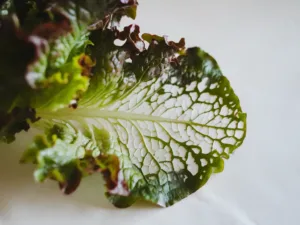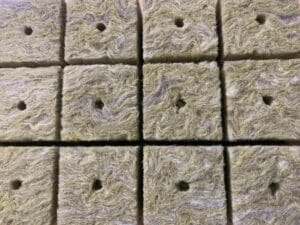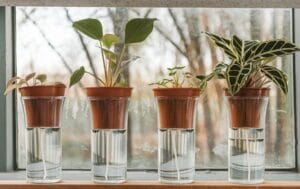Why Grow Garlic Hydroponically?
Garlic is not only an essential ingredient in the kitchen but also a plant with numerous health benefits. Did you know that garlic thrives particularly well in hydroponics? Hydroponic systems offer an excellent way to maximize the yield and quality of your garlic by precisely controlling nutrient supply and growth conditions.
Compared to traditional soil cultivation, hydroponic growing has many advantages. It reduces the risk of soil-borne diseases and pest infestations, allows for faster growth cycles, and ensures a clean and sustainable harvest. If you want to ensure a constant supply of fresh, aromatic garlic, hydroponics is the way to go!
Best Garlic Varieties for Hydroponics
Not all garlic varieties are the same, and some are better suited for hydroponic cultivation than others. Generally, garlic varieties can be divided into two main categories: hardneck and softneck garlic. Hardneck varieties are often more robust and have a stronger flavor, while softneck varieties are longer-lasting and ideal for storage.
- Chesnok Red (Hardneck): Known for its rich flavor, this variety is excellent for hydroponic cultivation. Chesnok Red forms compact, uniform cloves that grow evenly, making it an excellent choice for fresh, aromatic harvests.
- California Early (Softneck): A popular choice among gardeners growing garlic for storage. This variety grows quickly and yields a high harvest, ideal for hydroponic beginners.
- German Extra Hardy (Hardneck): This variety has large cloves and is highly resistant to cold climates. It is well-suited for cultivation in temperature-controlled systems.
- Sicilian Silver (Softneck): Known for its mild flavor and long shelf life, this variety is perfect for those who want to use garlic both fresh and dried.
- Music (Hardneck): A favorite among gourmets for its sweet yet spicy taste. It grows well in hydroponic systems and delivers a high yield.
The right variety depends on whether you value flavor, durability, or yield. Feel free to try several varieties to find the best one for your hydroponic garden!
Which Hydroponic Systems Are Best for Garlic?
Garlic is relatively undemanding and can thrive in various hydroponic systems. However, some systems are particularly well-suited for garlic cultivation:
- Deep Water Culture (DWC): This system is ideal for beginners as it is easy to set up and maintain. Garlic thrives in a nutrient-rich solution that continuously supplies oxygen, promoting root growth and nutrient uptake.
- Nutrient Film Technique (NFT): NFT is another excellent system for garlic, especially if you have limited space. A thin nutrient solution flows over the roots, providing a constant supply of water and nutrients. Garlic can develop particularly large cloves in these systems.
- Kratky Method: For minimal effort, the Kratky method can be a good choice. It is a passive system that does not require a pump. However, regular monitoring is essential to ensure that the water level remains constant.
For optimal yield and healthy plants, a DWC system is best, as it provides constant oxygen supply and stable nutrient delivery.
Garlic Cultivation: Starting Your Hydroponic Adventure
Growing garlic in hydroponics begins with selecting the right cloves. Choose fresh, large garlic cloves that are firm and disease-free. Ideally, use cloves from organic garlic to ensure they are free of growth inhibitors that could prevent germination.
- Pre-sprouting: Place the garlic cloves in a damp cloth and let them sprout for a few days. Once the cloves develop roots and the first green shoots appear, they are ready to be transferred to the hydroponic system.
- Inserting into Grow Cubes: Use rock wool or coconut fiber cubes as a substrate. Insert the sprouted cloves into the cubes and place them in a germination box setup with a constant temperature of about 20°C.
- Caring until Transfer to System: Keep the grow cubes consistently moist and provide sufficient light. Once the roots grow through the substrate, you can transfer the plants to the hydroponic system.
With proper preparation, you can increase the germination rate and ensure that your garlic plants start strong and healthy in the hydroponic system.
The Ideal Substrate for Hydroponic Garlic
Choosing the right substrate is crucial for growing garlic in hydroponics. The substrate serves as an anchor for the roots and helps retain moisture and nutrients. Here are the best options:
- Rock Wool: A popular substrate that offers excellent water retention and air circulation. It supports the roots well and ensures even nutrient distribution.
- Coconut Fiber: A sustainable alternative to rock wool, also with good water retention capacity. Coconut fiber promotes root growth and is biodegradable.
- Perlite: This substrate provides excellent drainage and prevents waterlogging, which is important for avoiding root rot.
For garlic, rock wool is the preferred choice as it retains both moisture and oxygen well, which is crucial for healthy growth.
Optimal Temperature and Humidity for Garlic Growth
Garlic prefers moderate temperatures and stable humidity. The optimal conditions are a daytime temperature between 18-22°C and a nighttime temperature around 12-15°C. High temperatures can impair growth and stress the plants.
A relative humidity of 50-60% is ideal to promote growth and prevent the leaves from drying out. It is important to maintain good air circulation to prevent mold formation, especially in closed systems.
Lighting: How Much Light Does Garlic Need?
Garlic is a plant that requires a lot of light to grow strong and healthy. For optimal growth, make sure the plants receive at least 12-14 hours of light per day. LED grow lights are ideal as they provide a broad light spectrum and are energy efficient.
During the vegetative growth phase, about 6,000-8,000 lux are sufficient to develop strong leaves. In the ripening phase, the light intensity can be slightly increased to promote bulb formation.
pH and EC Levels: The Secret to Healthy Garlic Plants
A stable pH level of 6.0 to 6.5 is crucial for nutrient uptake in garlic. A pH level outside this range can lead to nutrient blockages that impair growth. The EC levels (electrical conductivity) should be in the range of 1.8 to 2.4 mS/cm to ensure balanced nutrient supply.
Regular testing of pH and EC levels is important to ensure your plants have the right conditions for optimal growth.
Fertilizers and Nutrient Solutions for Hydroponic Garlic
Garlic requires a balanced mix of nutrients to grow healthily and deliver high yields. A good nutrient solution should contain nitrogen (N), phosphorus (P), and potassium (K) in a ratio of about 10-8-12. Additionally, micronutrients like magnesium, calcium, and sulfur are important to promote plant health.
- Weekly Nutrient Supply: Adjust the nutrient solution regularly to the growth phase. During the vegetative phase, garlic needs more nitrogen to promote leaf growth. In the bulb formation phase, the phosphorus and potassium content should be increased.
- Monitoring for Deficiencies: Yellow leaves may indicate nitrogen deficiency, while brown tips may indicate potassium or calcium deficiency. Adjust the nutrient supply accordingly.
Harvest Timing and Methods for Hydroponic Garlic
The perfect time to harvest is when about 70-80% of the leaves are dry and brown. This indicates that the bulbs are fully mature. Carefully remove the plants from the hydroponic system and hang them upside down in a cool, dry place to dry.
Let the garlic bulbs dry for about 2-4 weeks to intensify the flavor and extend their shelf life. Ensure good air circulation to prevent mold formation.
Diseases and Pests in Hydroponic Garlic: Prevention and Control
Although hydroponic garlic is less susceptible to pests and diseases, there are still some potential issues:
- White Rot: A fungal disease promoted by high humidity. Prevention through good ventilation and regular monitoring.
- Thrips: Small insects that feed on the leaves. Biological pest control, such as neem oil, is an effective solution.
- Downy Mildew: Occurs in high humidity. The best prevention is regular air circulation and humidity control.
With good care and monitoring of your plants, you can detect and combat most problems early.
Special Tips for Hydroponic Garlic Cultivation
Here are some additional tips to help you get the most out of your hydroponic garlic cultivation:
- “Hardening” Garlic: By exposing the plants to lower temperatures for a short time, you can make them more robust and promote bulb formation.
- Interplanting: Plant other low-growing herbs like basil or lettuce between the garlic cloves to optimize space in the system.
Become a Hydroponic Garlic Expert!
Hydroponic garlic cultivation is not only a great way to have your own supply of fresh, aromatic garlic but also an exciting and rewarding experience. With the right varieties, a good system, and the care you now know, you’re well-equipped to dive into the world of hydroponic garlic cultivation. What are you waiting for? Start today!







